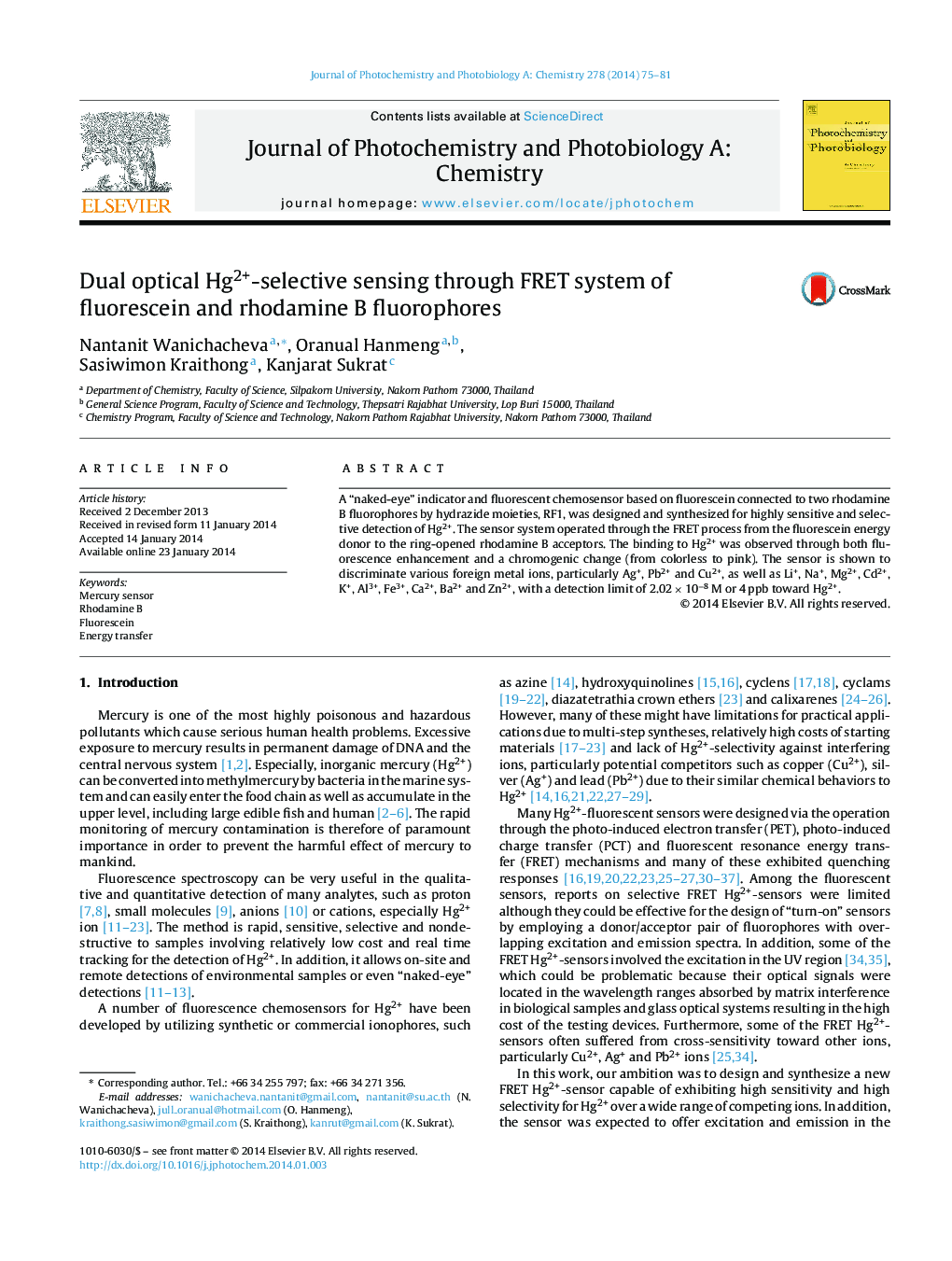| Article ID | Journal | Published Year | Pages | File Type |
|---|---|---|---|---|
| 27213 | Journal of Photochemistry and Photobiology A: Chemistry | 2014 | 7 Pages |
•New FRET sensor based on fluorescein and rhodamine B fluorophores was prepared.•Sensor binds to Hg2+, indicated by TURN-ON fluorescence signal and color change.•Sensor shows high Hg2+-sensitivity and selectivity with detection limit of 4 ppb.•Sensor is shown to discriminate various metal ions, particularly Cu2+, Ag+ and Pb2+.•Hg2+-sensor shows reversible behavior by the alternate addition of triethylamine.
A “naked-eye” indicator and fluorescent chemosensor based on fluorescein connected to two rhodamine B fluorophores by hydrazide moieties, RF1, was designed and synthesized for highly sensitive and selective detection of Hg2+. The sensor system operated through the FRET process from the fluorescein energy donor to the ring-opened rhodamine B acceptors. The binding to Hg2+ was observed through both fluorescence enhancement and a chromogenic change (from colorless to pink). The sensor is shown to discriminate various foreign metal ions, particularly Ag+, Pb2+ and Cu2+, as well as Li+, Na+, Mg2+, Cd2+, K+, Al3+, Fe3+, Ca2+, Ba2+ and Zn2+, with a detection limit of 2.02 × 10−8 M or 4 ppb toward Hg2+.
Graphical abstractA new FRET Hg2+-sensor exhibits highly Hg2+-selective OFF–ON fluorescence enhancement and chromogenic change (from colorless to pink), as well as discriminates various foreign metal ions, particularly Ag+, Pb2+ and Cu2+, as well as Li+, Na+, Mg2+, Cd2+, K+, Al3+, Fe3+, Ca2+, Ba2+ and Zn2+, with a detection limit of 2.02 × 10−8 M or 4 ppb.Figure optionsDownload full-size imageDownload as PowerPoint slide
